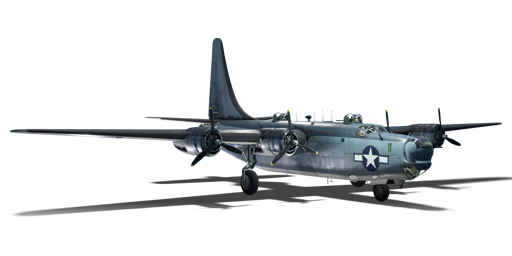



During the early stages of the Pacific war, the United States Navy pressed the largely unmodified B-24 Liberator into service as the "PB4Y-1 Liberator" to fulfilling their urgent need for long range maritime patrol aircraft. Observing these developments and the success of the PB4Y-1, the Consolidated Aircraft Company made a proposal to the US Navy in 1943 for a purpose-built maritime version of the Liberator, to which the US Navy accepted as it deemed the dedicated naval version of the Liberator to be a significant improvement. To accomplish its duty, the Consolidated PB4Y-2 Privateer featured several drastic changes compared to the original Liberator, most noticeably its lengthened fuselage to accommodate the flight engineer position to reduce the crew's overall fatigue in long range missions, and a tall single tail fin modified from the cancelled B-24N prototype of the USAAF as opposed to the twin tails of the Liberator, intended to give better stability at low altitudes. Other notable changes including the removal of superchargers from the engine to optimize them for maritime operations, as well as several changes in the arrangements of the defensive turret positions. The Privateer would enter service in late 1944 and go on to serve in various roles, such as maritime and ASW patrol, weather tracking, reconnaissance flight, and signal tracking with the US Navy until 1954, with some unarmed Privateers retired from the US Coast Guard four years later. In total, 739 Privateers were built, with some were supplied to France and Taiwan as a part of defensive pact.
Introduced in Update 1.69 "Regia Aeronautica", the PB4Y-2 Privateer is a maritime patrol/reconnaissance aircraft derived from the B-24 Liberator. With several changes to better fit its new roles such as the removal of superchargers and longer fuselage, the Privateer is noticeably much slower than the Liberator. High-altitude bombing is a struggle, as the engine loses output the higher it gets. As such, Privateer pilots will often be forced to descend to lower altitudes to get to the enemy bases, effectively exposing them to enemy's attention in the process. Since the plane would usually be flying at lower altitude, the Privateer comes with 14 Browning machine guns covering the upper portion of the plane as its defensive armaments. However, these turrets have a rather mediocre coverage at the rear and can be easily bypassed by enemy fighters at certain angles, especially below the plane.
Because of this, the only truly positive quality of the Privateer is its ridiculously heavy payload in the form of eight Type A naval mines, each with as much explosive as an average 1,000 kg bomb. Since these mines behave like a normal air-dropped bombs in-game (save for when being dropped into water), the Privateer can easily destroy several bases or level off enemy ground vehicles with ease, provided that you are not intercepted by enemy planes or shot down by anti-aircraft fire.
flaps
flaps
flaps
brake
| Belt | Belt filling | Armor penetration (mm) at a distance: | |||||
|---|---|---|---|---|---|---|---|
| 10 m | 100 m | 500 m | 1000 m | 1500 m | 2000 m | ||
| T/AP/I/AP-I | 30 | 27 | 20 | 13 | 9 | 6 | |
| AP/AP/AP/T | 30 | 27 | 20 | 13 | 9 | 6 | |
| AP-I/AP-I/AP-I/T | 28 | 26 | 18 | 11 | 7 | 4 | |












Flight performance | |
|---|---|
Survivability |
|---|
Weaponry | ||
|---|---|---|